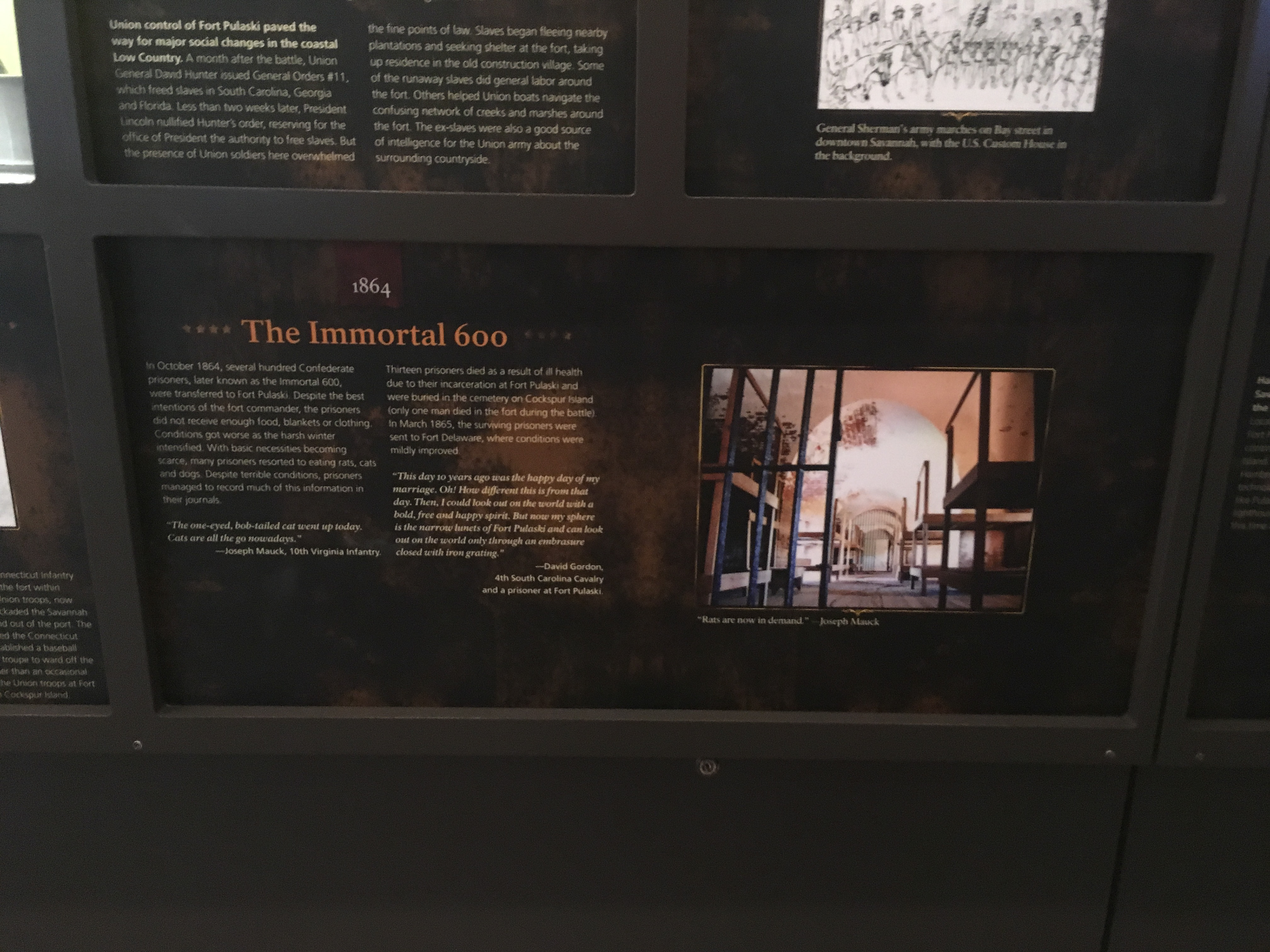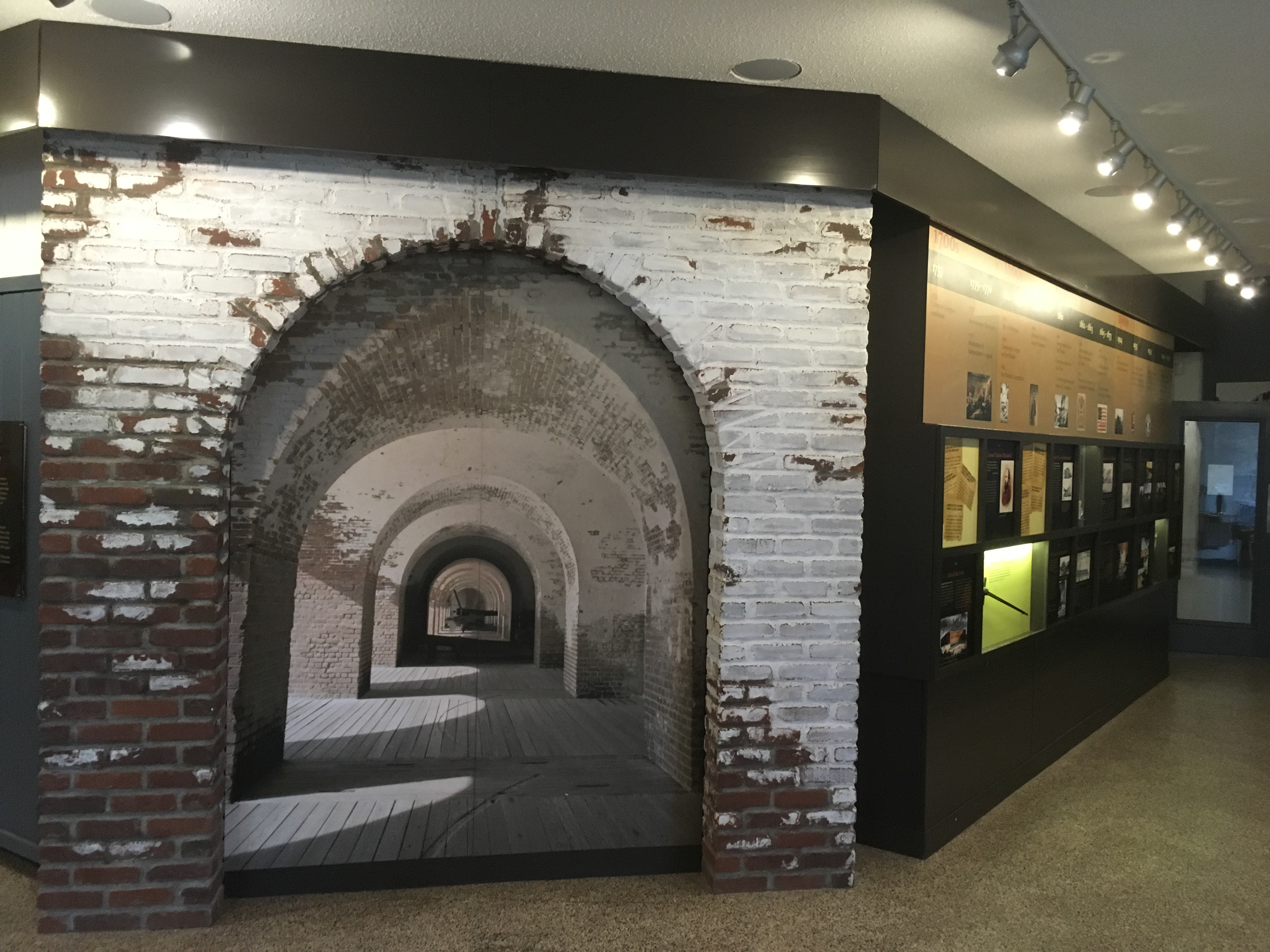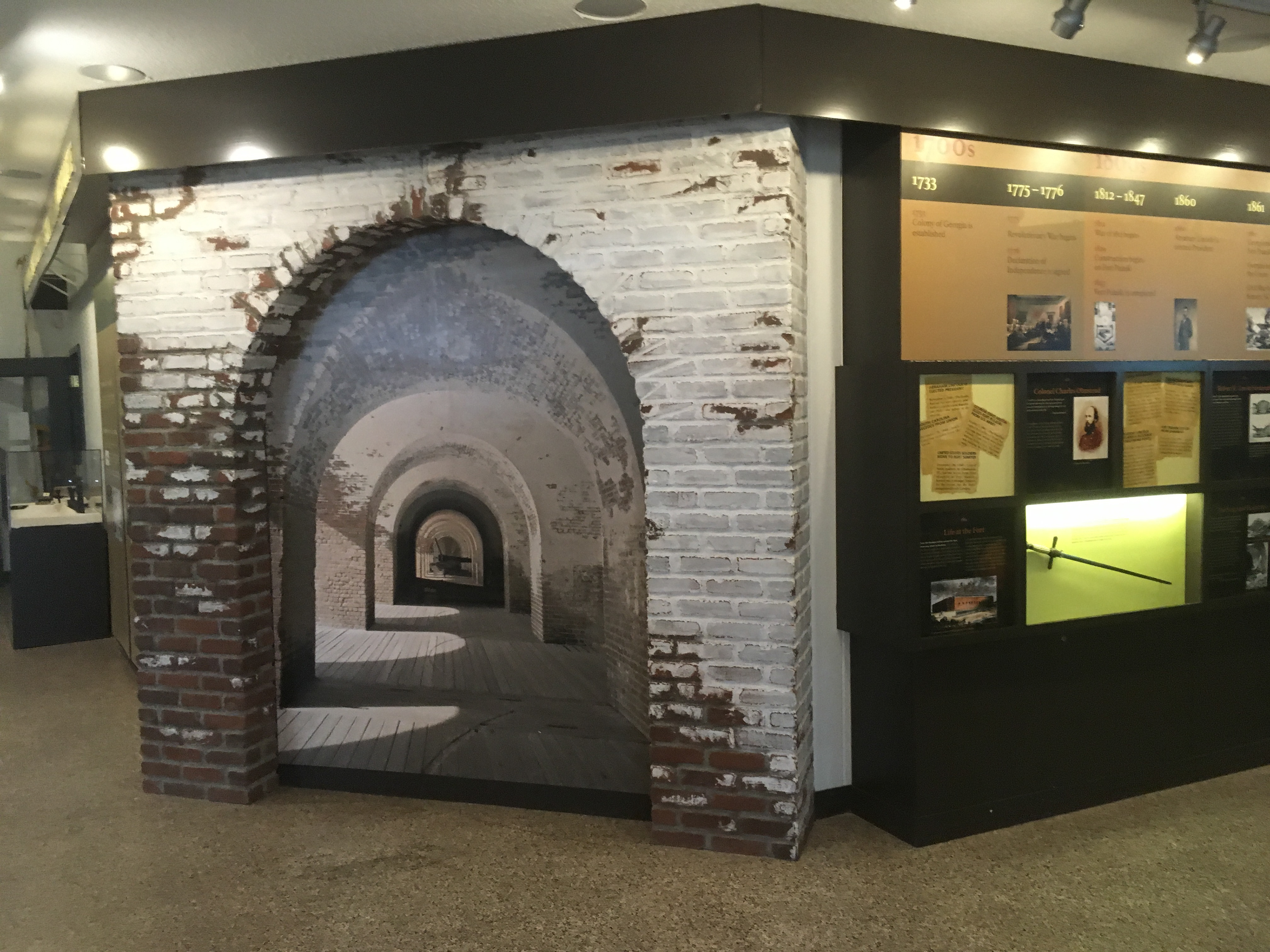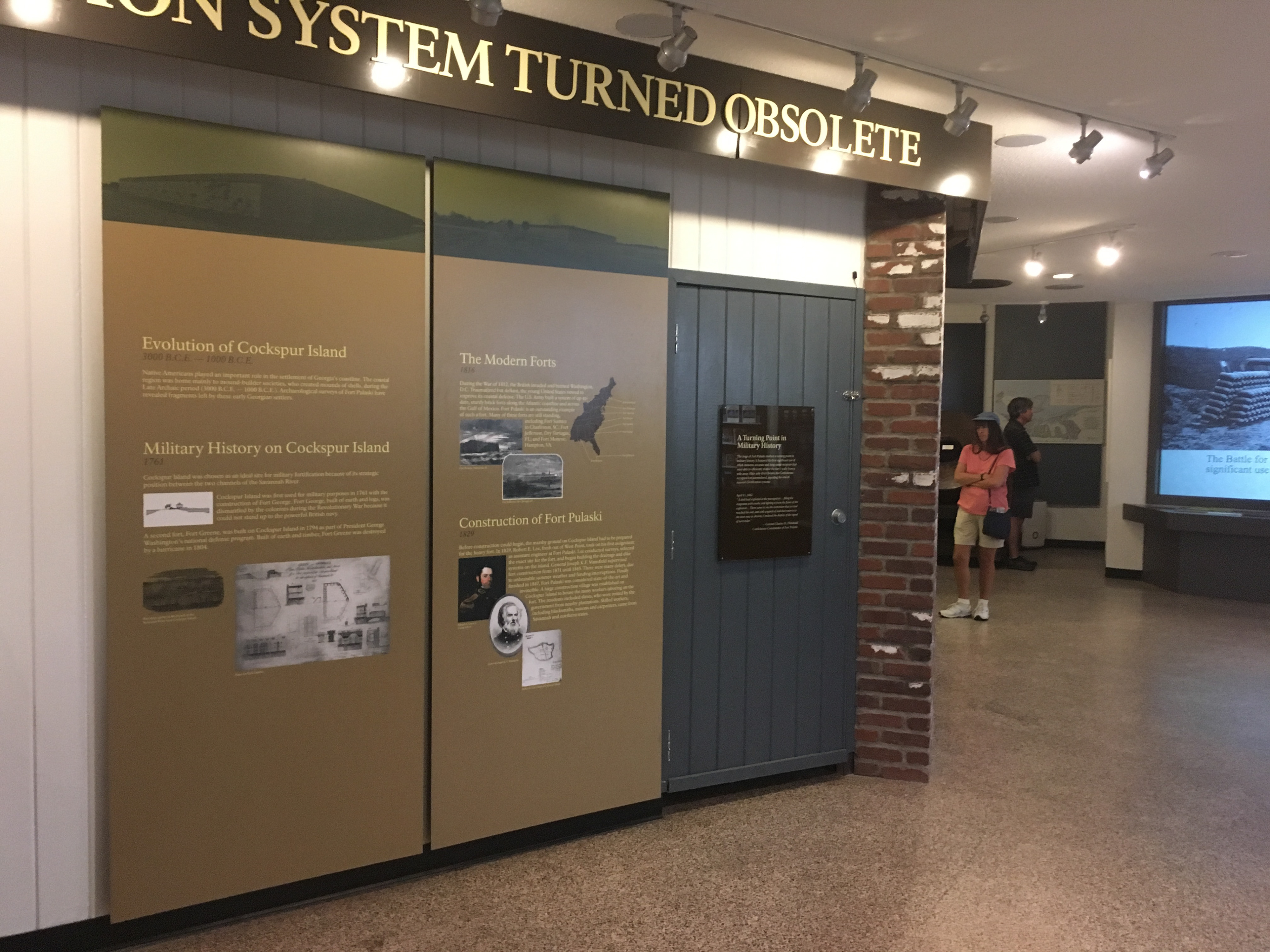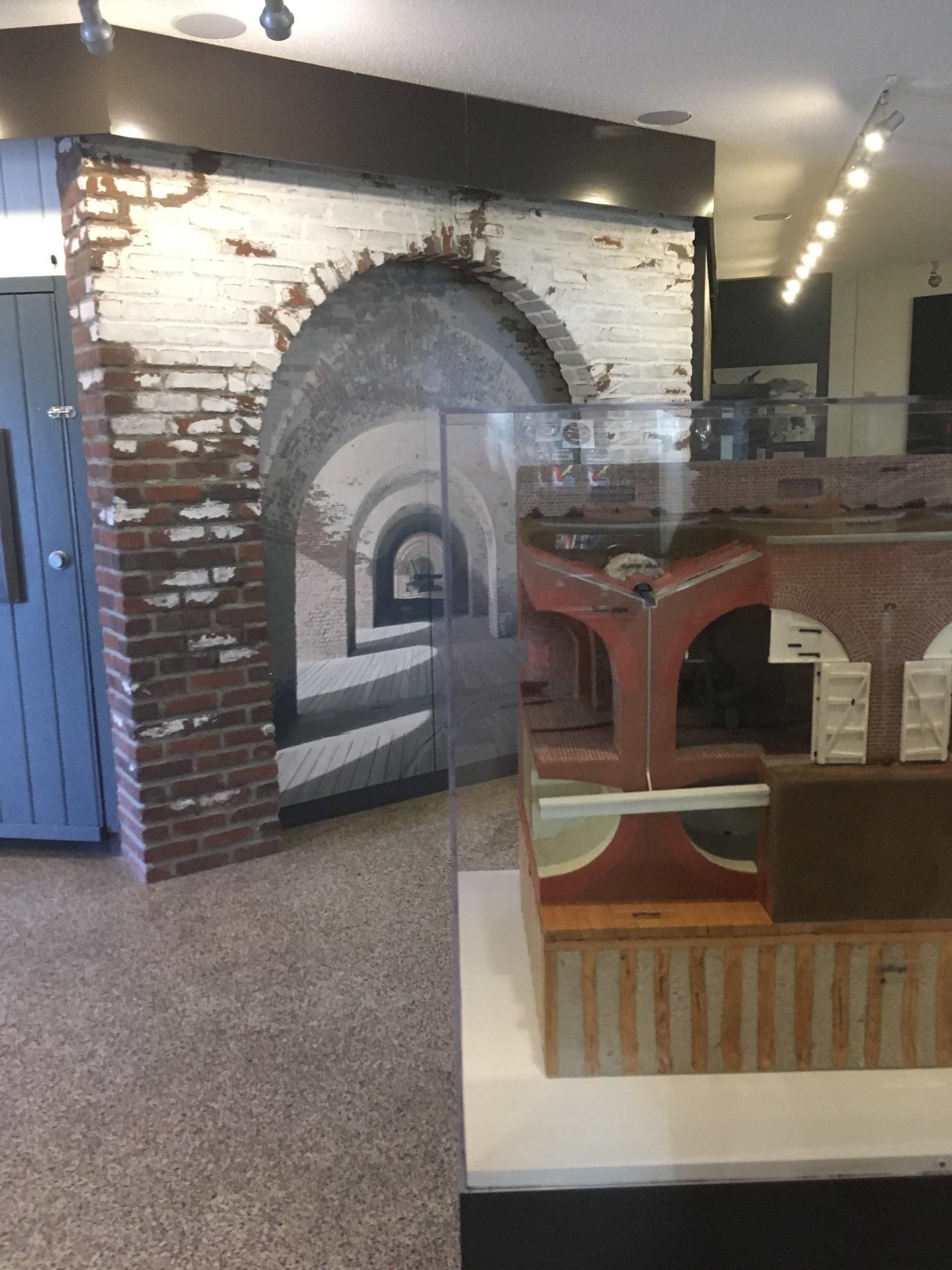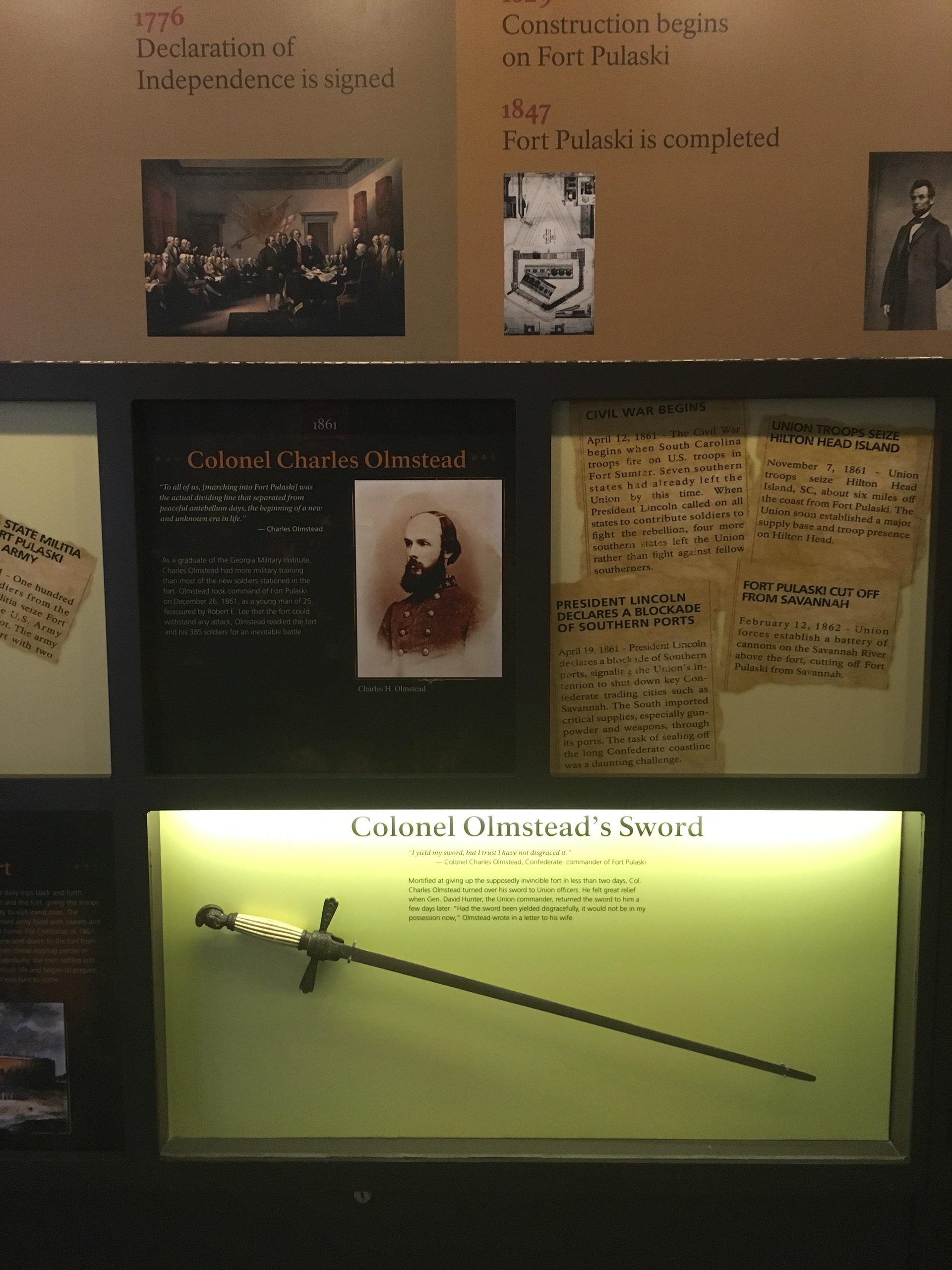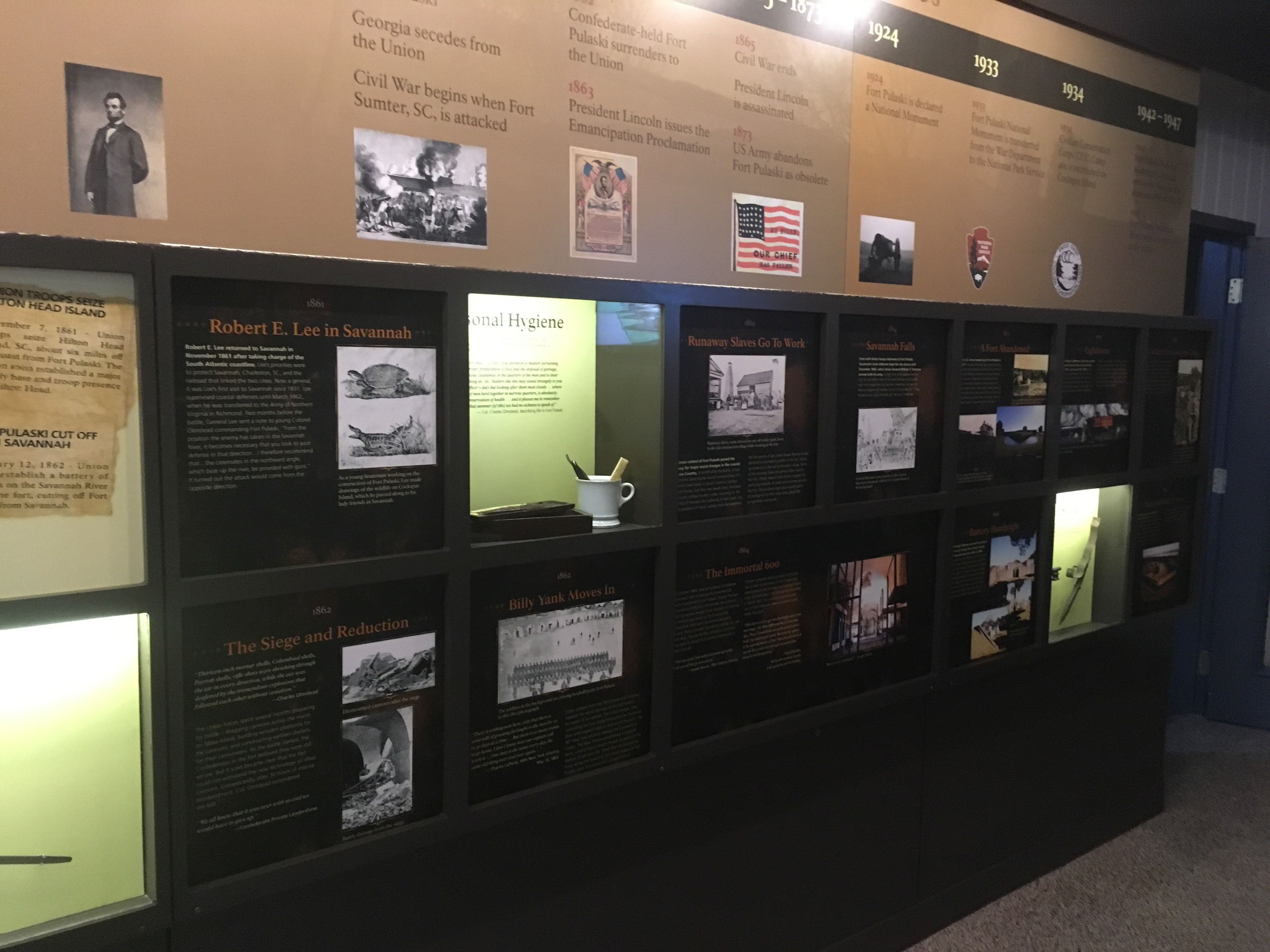A collaborative project:
This exhibit plan came out of an interdisciplinary class at the Savannah College of Art and Design with the goal of redesigning three educational exhibits to be installed in FortPulaski National Monument's Visitors’ Center that was debuted in 2016 with the National Parks Service for their Centennial Initiative.
Fort Pulaski is located on Cockspur Island, just off the coast of Savannah, Georgia. The site is significant as the location where new technology, the rifled cannon, made brick fortifications obsolete. The fort fell during the American Civil War to the Union after they battered the fort with rifled cannons.
I worked with 15 students in majors as various as architecture, industrial design, and sequential art. We spent many hours watching visitors interact with the visitor center and monument itself. We also met with and interviewed the national monument rangers, who were our clients on the project.
Research leads to updating copy:
My primary role in this project was to develop new copy and to retell the story of the National Monument as a fortification system turned obsolete through new cannon technology. I, along with another historic preservation student, created copy based on extensive research with the monument's staff and the Historic Savannah Foundation.
Working with other interior design students, I assisted in digitally laying out new displays and mock-ups for the display wall seen above.
Photos above were of the existing exhibit.
This is a mock-up of the exhibit wall. We took photographs and digitalized archived photographs for the exhibit. We also planned what artifacts should be included in the project.
The centerpiece:
A major feature of the design was a three-dimensional exhibit at the entrance featuring a historic photograph of one of the larger holes that were blown in the fort by rifled cannons.
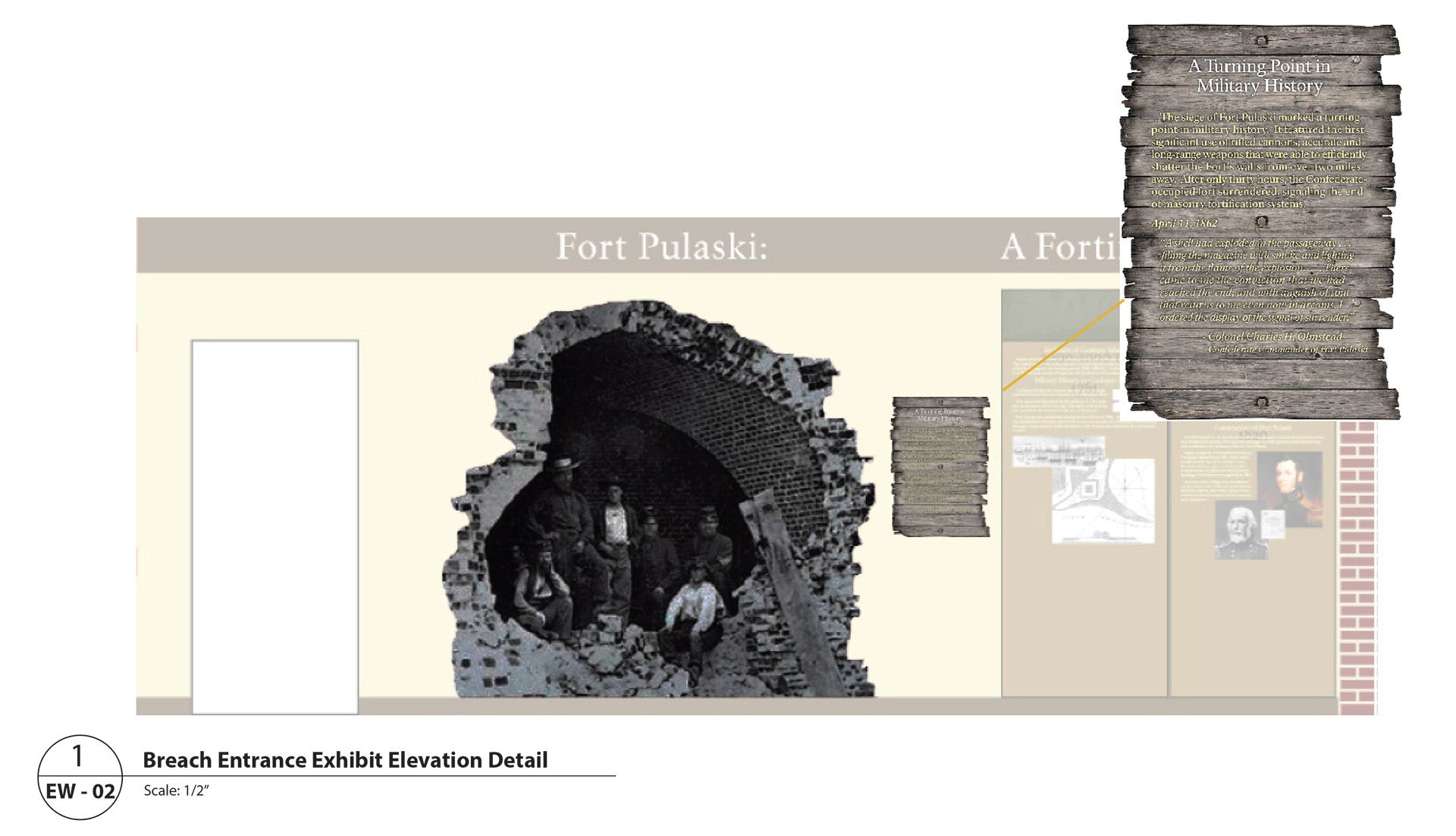

Developing an exhibit that can transform:
Below are some digital examples of the modular displays. The concept behind the modular wall was to allow square-based panels to be changed out as new information was discovered or needed to be changed based on new interpretations of the national monument.
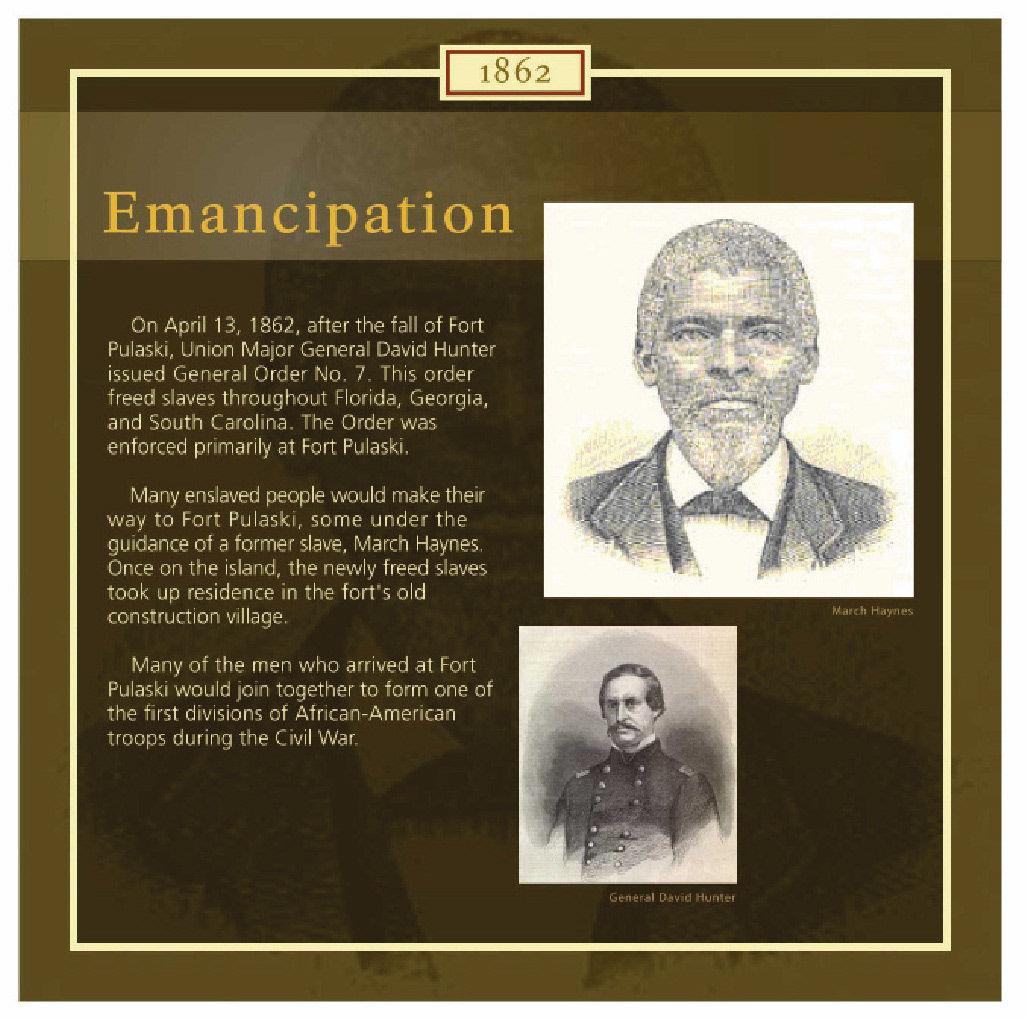
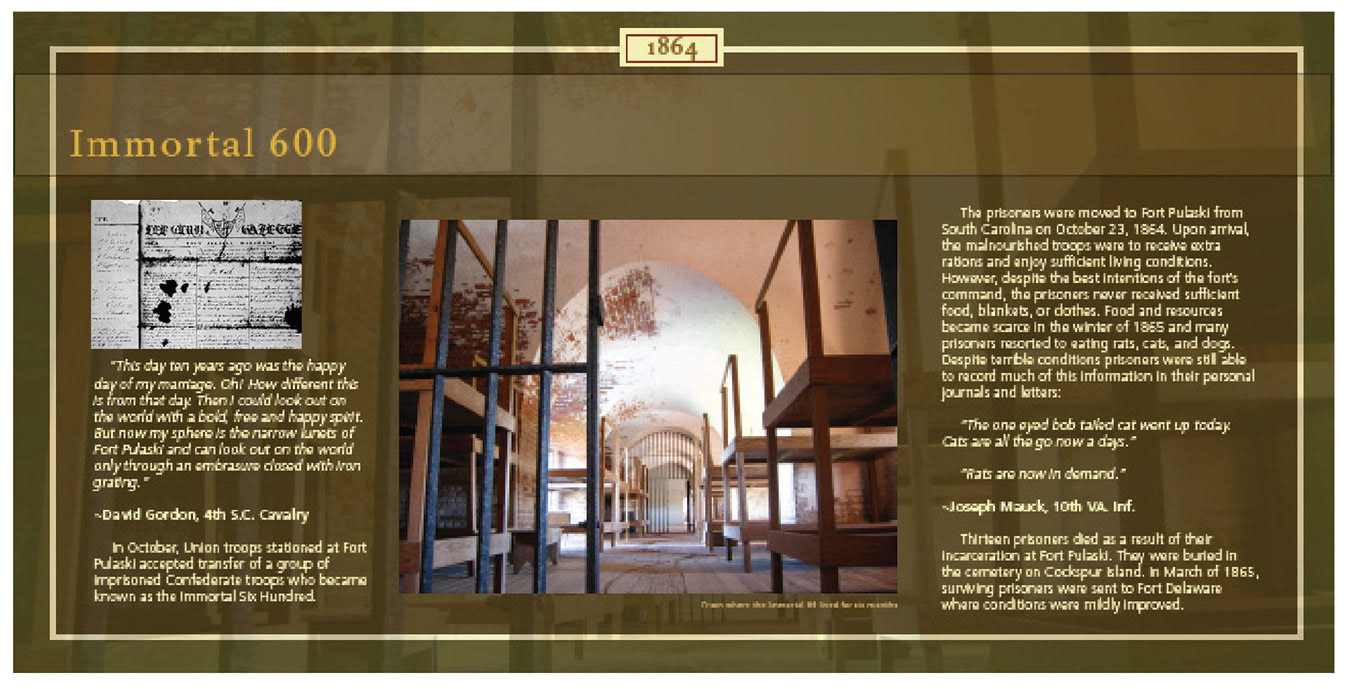

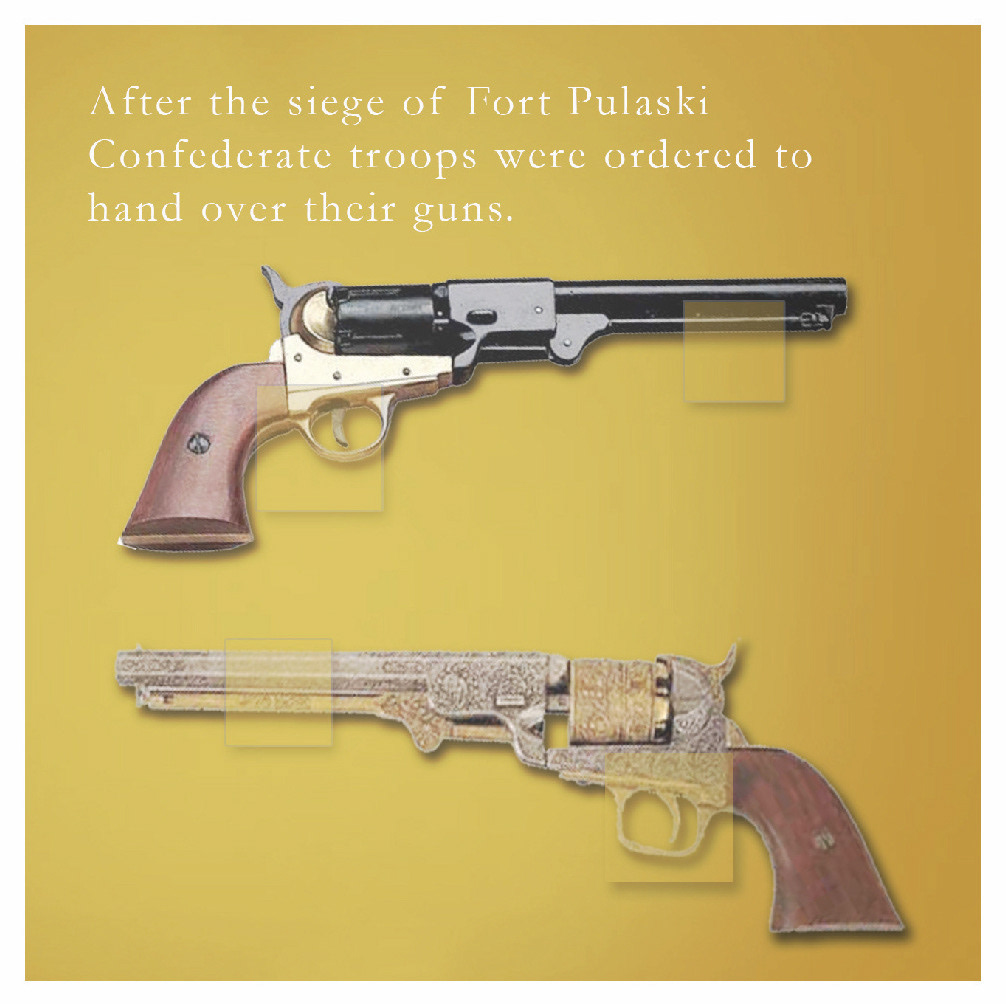
Below are photos of the final exhibit taken in 2019
